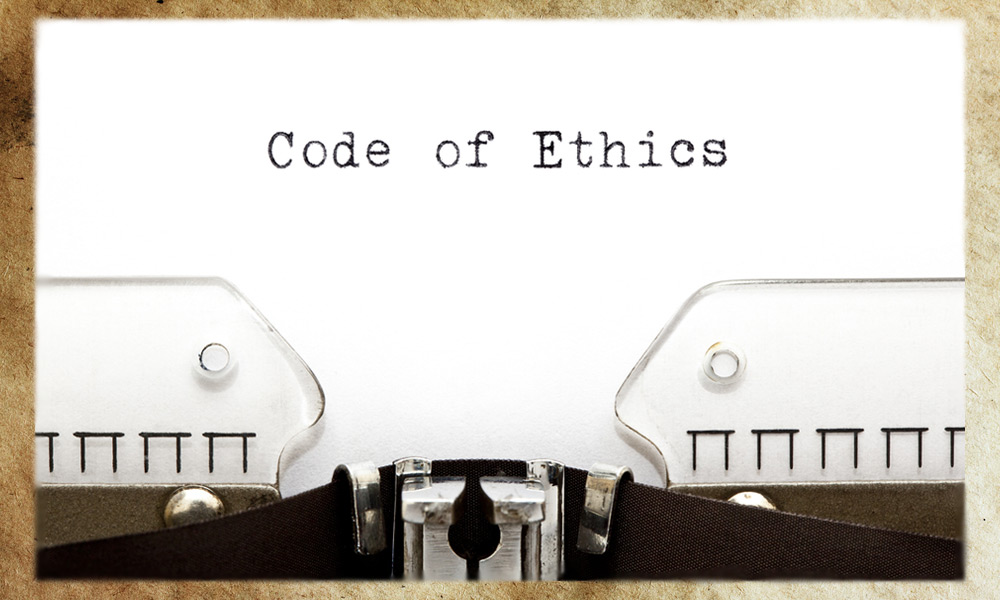The Society of Professional Journalists, after leaving its code of ethics untouched for nearly 18 years, has released a revised draft that includes, for the first time, updated guidance on how journalists should behave in the rapidly changing field of digital news.
The proposed revisions, released in March, offer both specific and subtle changes to the 1996 code, including new tenets that direct journalists to “aggressively … update information as the story unfolds” and independently verify information taken from other news sources.
The draft is raising questions among some digital journalists who think SPJ should go farther and be more specific in terms of defining ethics related to online publishing. SPJ National Ethics Committee Chairman Kevin Smith said he agrees with some of what detractors have said: The current proposed revision falls short of addressing the role and importance of social and digital media, and it should be “a little more expressive in what it says.”
Steve Buttry, Digital Transformation Editor at Digital First Media, on his blog, put it this way:
“The first draft at an update feels more like an effort to resist change than an effort to guide journalists in a time of change.”
The debate over the SPJ code draft illuminates ongoing tensions in the media industry as journalists try to navigate the complicated, yet-to-be-defined ethics of publishing on the Internet, such as rules on quoting information from social media, using a point of view in reporting and writing articles and headlines solely to drive traffic to a website.
Aaron Chimbel, assistant professor of professional practice at Texas Christian University in the Schieffer School of Journalism, said the draft opens up another question, too:
“Do you want a code that’s meant to endure and be a long lasting thing… or do you want it to be something that’s agile and changing as technology changes?”
The recent release of the draft for SPJ’s code of ethics revision comes at the same time the Online News Association is working on what it calls its “Build Your Own Ethics Code Project.” The association said it is releasing a first draft for feedback and “virtual crowdsourcing” in May at the International Journalism Festival in Perugia, Italy.
Which Guiding Principles Should Prevail in Digital News?
SPJ’s draft of code revisions comes at a time when digital native media startups are shaking up how legacy media outlets operate.
As the online news industry was growing, many legacy publications assumed that their guiding principles would be enough to encourage online journalists, outlets, and bloggers to abide by the same standards, said Kevin Smith, the SPJ National Ethics Committee Chairman.
Unfortunately, it’s worked in the other direction, and traditional journalists are instead the ones being influenced, according to Smith.
“I think there’s a lot of traditional media that has given up on ethical standards and said, ‘Well Buzzfeed, Gawker and these types, they’re doing it this way so we have to do it this way to keep pace with them,” Smith said.
The reason the draft is being released now? Smith said the timing has “more to do with the inner workings of SPJ than it really has to do with some shift or movement in journalism itself.”
From now until September, when SPJ hosts its 2014 Excellence in Journalism Conference, SPJ will “want to solicit all the feedback that we can” from traditional legacy organizations and digital news outlets alike, said president David Cuillier. The draft will also be discussed in spring conferences among regional organizations before the organization’s ethics committee takes in all the feedback and creates a second draft in June.
In September, SPJ aims to present a new code to its members, who will vote on its final approval.
Much of the current draft includes editing and the rewriting of old guidelines (For example, the 2014 draft added “Disclose unavoidable conflicts,” to the line in the 1996 draft: “Avoid conflicts of interest, real or perceived.”)
There are other, more obvious changes prompted by the changing nature of news.
For example, the current code suggests journalists, “Test the accuracy of information from all sources and exercise care to avoid inadvertent error. Deliberate distortion is never permissible.”
The code draft acknowledges a different environment for news by advising journalists to “Aggressively gather and update information as a story unfolds and work to avoid error. Deliberate distortion and reporting unconfirmed rumors are never permissible.”
It also includes provisions for addressing the anonymity of the web and advises journalists to exercise caution in gathering information: “Recognize the harm in using photos or information, including any photos and data from social media forums, for which the source is unknown.”
Transparency and Objectivity
Buttry said his biggest concern is that the new code fails to address the importance of transparency in reporting, an issue that has gained more attention as the online news industry has grown.
Buttry said transparency, which “appears nowhere in the revised draft,” should be a central tenet in the code. Writers who have personal biases or conflicts of interest should disclose that in their stories, which to Buttry, is more important than looking to appeal to all sides, or avoiding coverage all together if there may be a factor slanting the coverage.
He pointed to a provision in the 1996 code that touches on this issue by saying, “avoid undercover or other surreptitious methods of gathering information except when traditional open methods will not yield information vital to the public. Use of such methods should be explained as part of the story.”
But the revised code takes out the sentence about explaining those methods as a part of the story.
“It’s like, ‘Oh, we made a mistake, we included transparency last time in this one narrow instance, let’s even take that out,” Buttry said. “We have serious hostility toward transparency on the committee.”
Smith said he understands the need for transparency, but is worried that in some cases it can be abused by journalists who can absolve themselves of their “obligation to do a fair and accurate and complete job of the story.”
“Essentially what some advocates are suggesting is that it’s okay to be biased, it’s okay to be partial in terms of the way you handle things, so as long as you make it clear upfront what your conflicts are and where your personal viewpoints and your biases lie,” Smith said. “I think that is a huge fallacy and I think that does more to damage journalism than the notion of avoiding conflicts to begin with.”
Independence and Viewpoints
The new SPJ code may have to contend with how it will define the ethics for media outlets, such as Fox News, The Huffington Post and The Blaze, that produce journalism from a particular viewpoint, said Kelly McBride, senior faculty member and media ethicist at the Poynter Institute.
Independence has long been an important provision in the SPJ code, urging news organizations to explore all angles and viewpoints, and maintain objectivity in their coverage of the news, McBride said.
Many news organizations don’t ascribe to this same role anymore, but still produce good journalism, she said.
“We clearly are moving to a model where not all of our news providers are politically independent,” McBride said. “Do we as a profession declare that those voices are outside of the profession or do we find a way to validate the good journalism that they do and carve out space for them?”
Smith said what worries him the most is that over the years, SPJ has failed to view the initial code as a “living, breathing document” that should be subject to periodic reassessments as the industry changes.
“We need to look at journalism in the year 2014 and beyond and ask ourselves if what we’re putting on paper here as ethical standards for today’s journalists is going to stand the test of time,” Smith said.








Leave a Comment